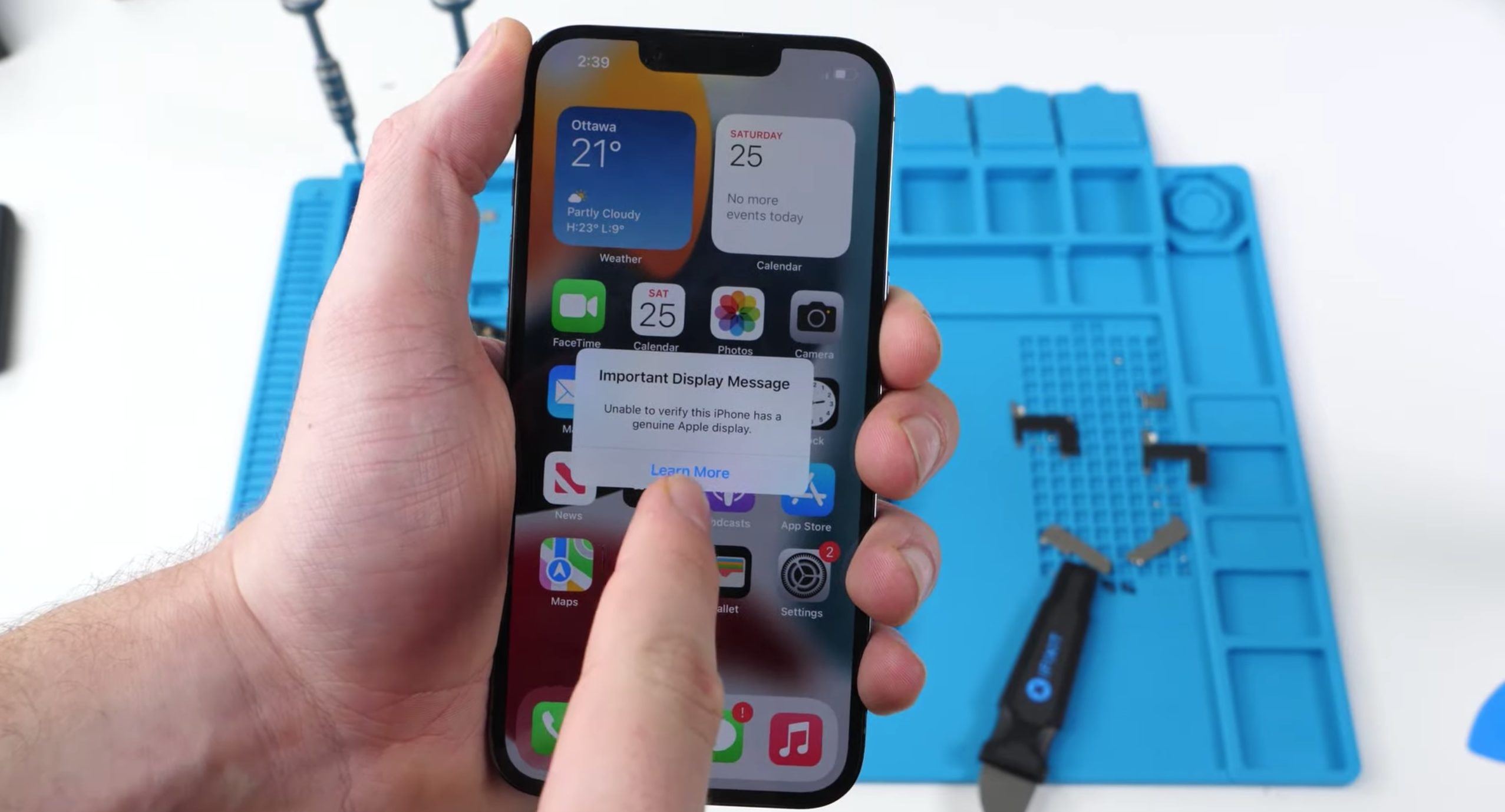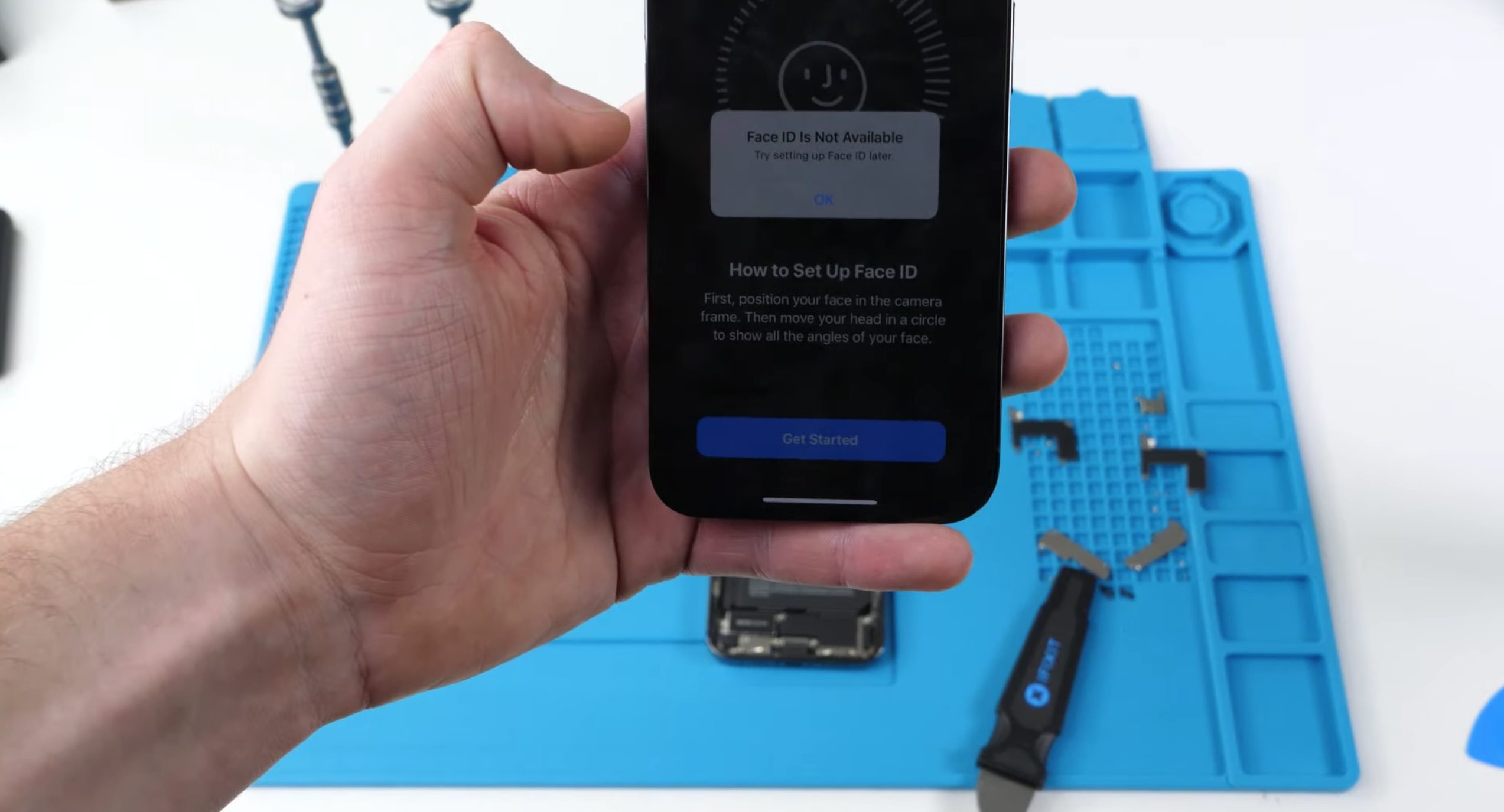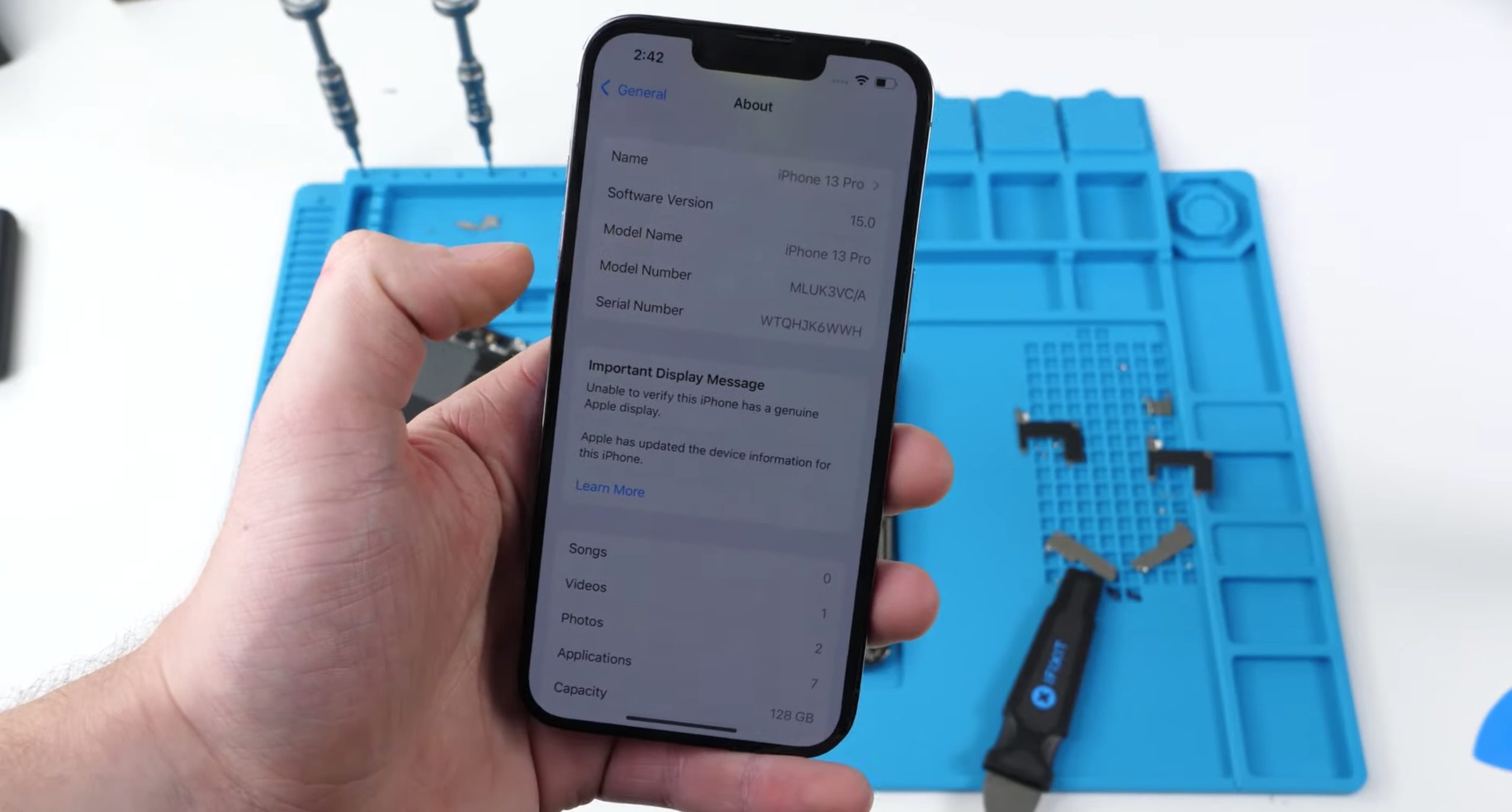Apple is under pressure for its ‘Right to Repair’ policy by legislators and activists. Despite having an expanding Independent Repair program, the company discourages self or third-party repairs by only allowing repairs by its service centers and authorized dealers who have genuine parts and other paraphernalia. The company has taken an extra step to prevent self or third-party repairs with the new iPhone 13 lineup.
YouTuber @Phone Repair Guru has found that FaceID will not work on the new iPhone 13 models if the smartphone screen is replaced with a third-party screen. That makes it impossible for users to get their devices repaired by third-party service providers.

The screen on iPhone 13 models authenticates Face ID not the notch
To test which components are used for FaceID authentication, @Phone Repair Guru swapped the components of the notch and screen of two iPhone 13 Pro mobiles. In the first test, when he replaced the microphone, ambient light sensor, and proximity sensor from one phone to the other, FaceID worked perfectly which means that the components in the notch do not hold any data for FaceID authentication. In the second test, removed the proximity sensor from the notch but FaceID worked with the original screen.

But when the screen was replaced with a non-genuine screen, both times, the iPhone 13 Pro instantly showed a ‘non-genuine screen’ notification when FaceID was used. Users will not be able to use FaceID to unlock their iPhones “at all.”

Every year, Apple tweaks the internals to prevent third-party repairs like logic boards, batteries, or cameras. However, Apple removed the camera repair speed bump in iPhone 12 series via a software update leaving users with a fully functional camera but an annoying message. The YouTuber expects that the company will do the same for the new flagship series as well but for now, any original iPhone 13 screen repaired by a non-genuine screen will make the FaceID unlocking mechanism completely useless.
Right To Repair reforms have been asking tech companies like Apple, Microsoft, and other manufacturers to provide users with the necessary documents, tools, software support, and other requirements for self or third-party repairs. These measures will not only save users money but also reduce e-waste.
Read More:
1 comment
Comments are closed.